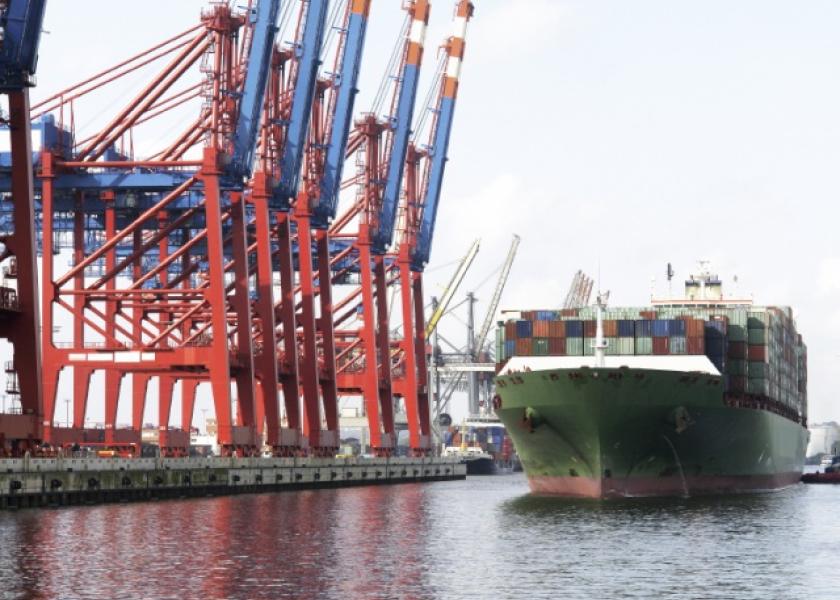Experts Advise Cattle Producers to Keep Watchful Eye on Export Markets

The impact of U.S. beef exports on calf prices continues to rise as experts advise ranchers to stay abreast of trade developments globally.
Randy Blach, CEO of CattleFax in Denver, Colorado, told attendees at the Texas A&M Beef Cattle Short Course in College Station that exports have become an integral part of calf prices and, following the latest trade discussions, are imperative when formulating marketing plans.
“Just look at how fast our export markets have grown since Christmas 2003 when we had BSE,” Blach said. “We have the opportunity for that value to go as high $500.”
Those prospects are fueled by a strong economy and consumer demand, he said.
“Consumers across the world want what you produce, which is a safe, reliable, wholesome, high-quality product,” Blach said. “As we look down the road, I want you to be thinking; are you doing everything you should be doing to deliver the best product?”
To put the importance of beef export markets into perspective, Blach said the U.S. exports 17 billion pounds of beef worth $18 billion.
“That’s $365 in value of the calf you are producing,” he said. “We’ve really got to keep an eye on these trade situations.”
Industry experts note consumers are wanting more protein at a record pace.
“We will have record meat consumption in 2019 in the U.S.,” Blach said. “ Never in our history have we consumed more red meat, pork and poultry than we are now. People are eating livestock protein.”
Jason Cleere, Texas A&M AgriLife Extension Service beef cattle specialist, College Station, and Kelley Sullivan, co-owner of Santa Rosa Ranch in Navasota and Crockett, discussed China markets and their potential. Both serve on the Texas Beef Council board of directors and were part of recent visits to China and Japan to learn more about opportunities in trade and share educational programming with representatives in those countries.
“China is encouraging people to eat more red meat,” Cleere said. “There are 93 people per square mile. Bejing has 22 million people. By comparison, Houston has 6.3 million people.”
A dense population is creating more opportunity for U.S. beef in China as the combination of online and offline retail shopping trends continue. E-commerce continues to drive a majority of the market and with so many people, living quarters are primarily high-rise apartments with small square footage.
“They don’t have an oven, they a Hibachi type grill and like a very thin-sliced beef product,” Cleere said. “We need to think about how do we tap into that market with the products we produce.”
Sullivan touted the value of undesirable beef carcass parts in U.S. that are in great demand in Japan and other parts of the world.
“About $165 to $170 of the check you get from the sale of a calf comes from that export market,” Sullivan said. “Where that’s coming from are the parts we don’t like, such as beef tongue. In the U.S. we pay $1 a pound, in Japan $6 a pound. Beef intestine, in the U.S. there’s zero value, but it’s $1.50 a pound in Japan. It’s critical to have those export markets.”
Attendees at this week’s short course traveled from across Texas, the U.S. and internationally.
“What I love about the short course is we learn so many things about specific areas from from cattle marketing, to ranch management, grass management, better care for our cattle and genetic improvement,” said Donnell Brown of RA Brown Ranch in Throckmorton. “There are so many things. In addition, there’s a great trade show with lots of different products to help us on the ranch. And best of all, you see so many good people … another record crowd this year. It’s always good to be together again with cattlemen from all over the country.”
Patrick Stover, vice chancellor and dean of agriculture and life sciences at Texas A&M University, welcomed attendees and stressed the importance of understanding the linkage between food and health.
“In Texas, food has a strong economic significance in our state,” said Stover, also acting director of Texas A&M AgriLife Research. “Increasingly, we know food is fundamental to our health both short and long term. As we develop research that connects food and health, we also have to understand the consumer. What drives their beliefs? Thank you for what you do each and every day to nourish the state of Texas and the world.”







